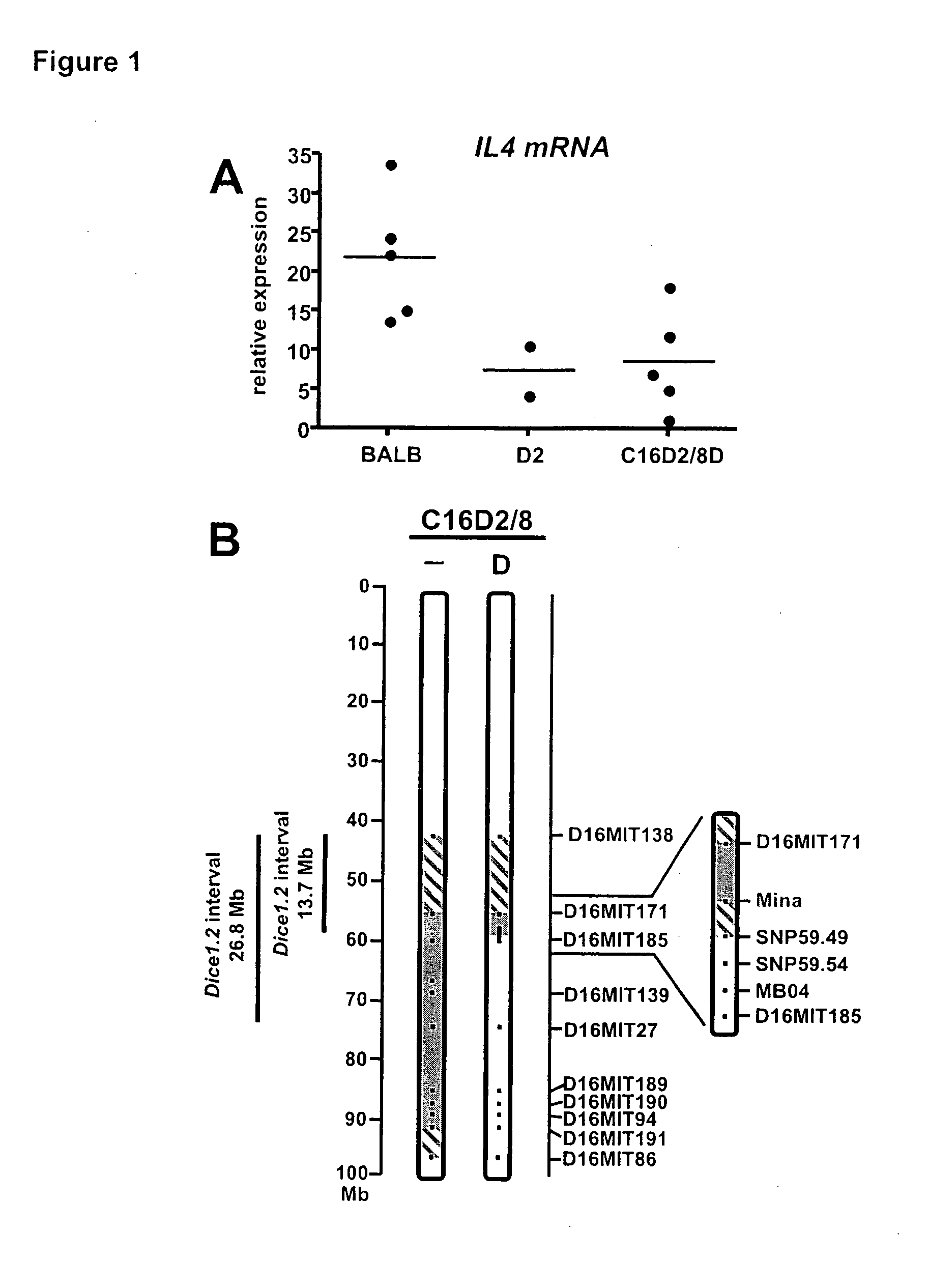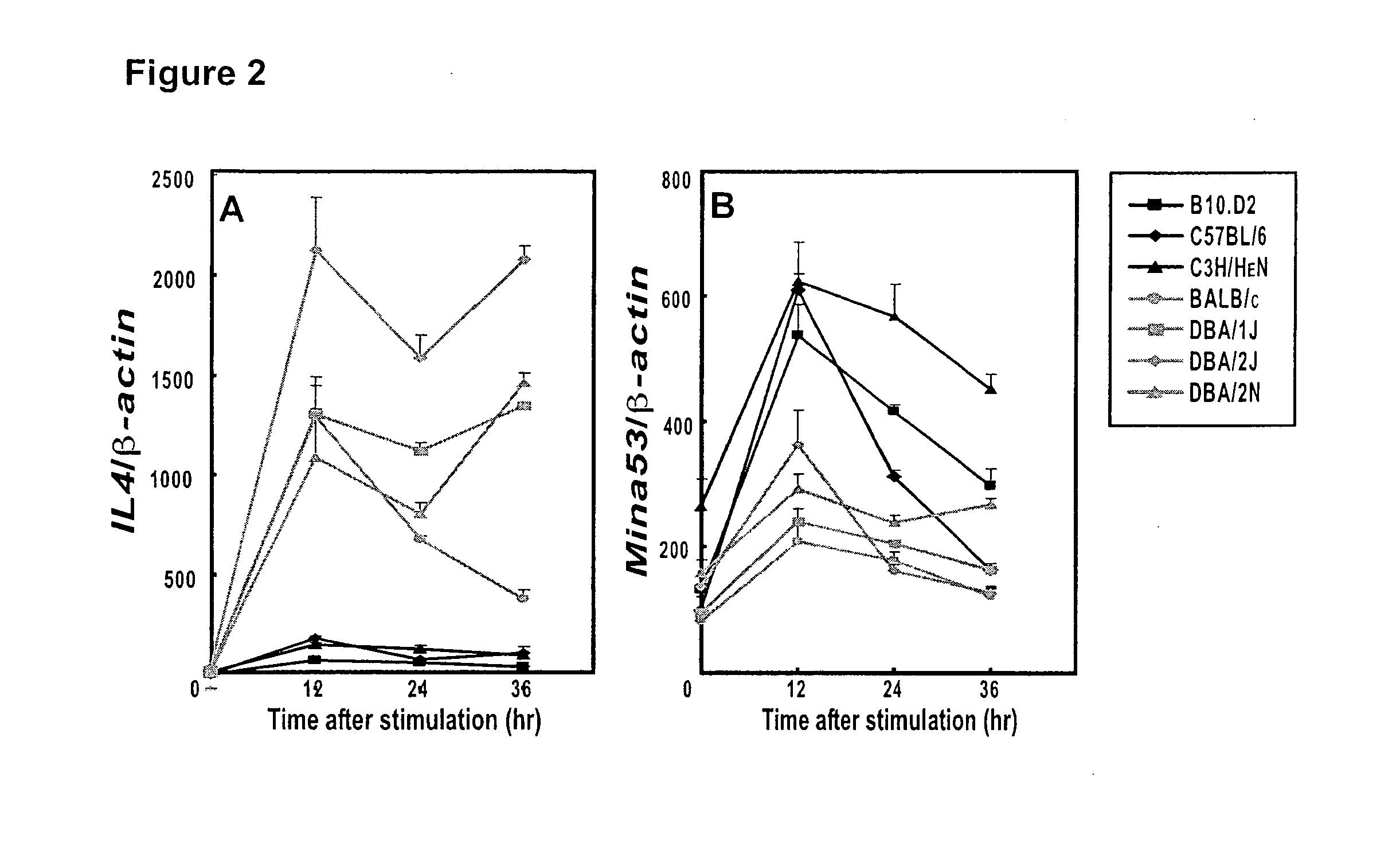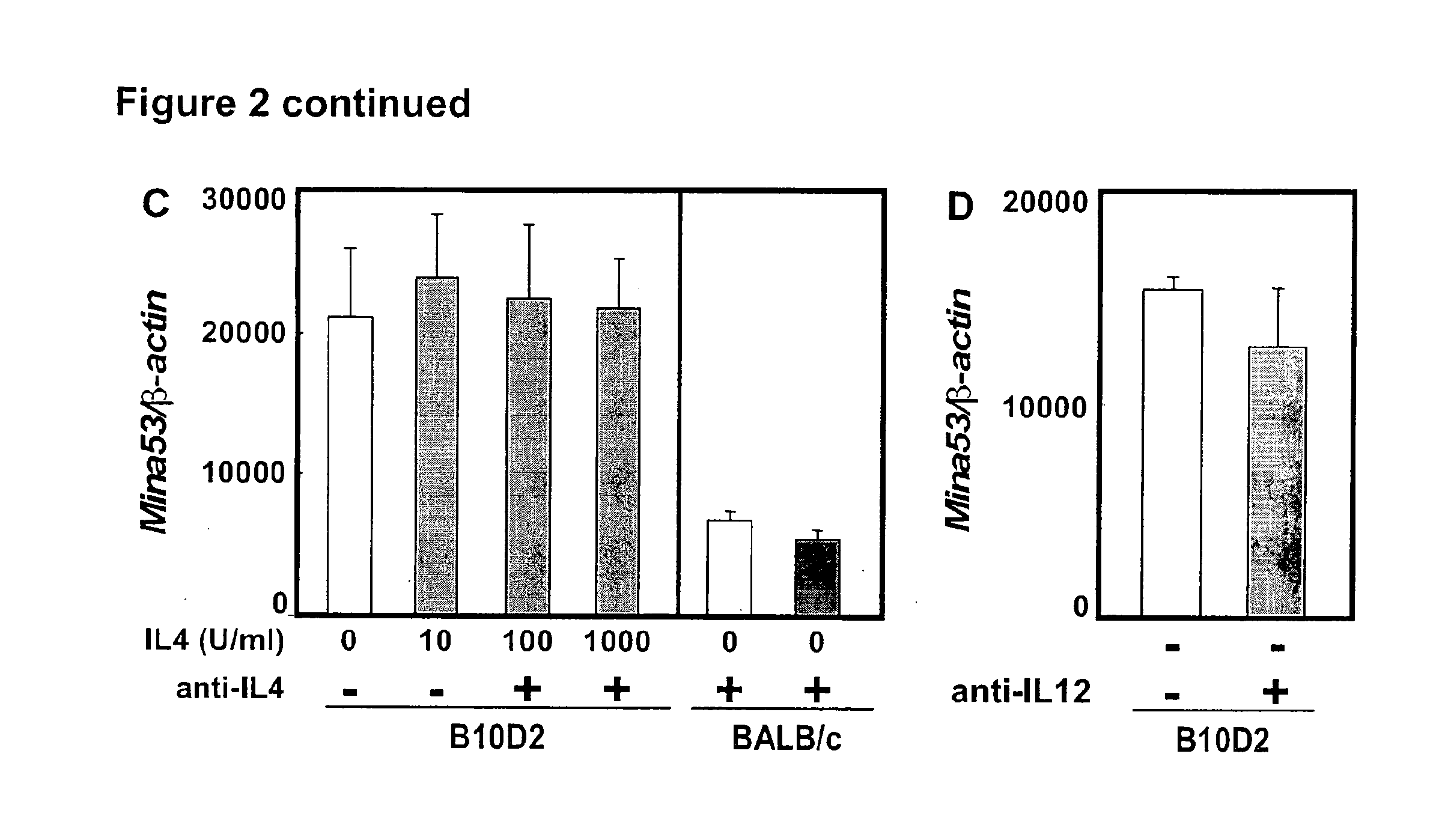Methods and compositions for predicting development of atopic diseases
a technology of atopic diseases and compositions, applied in the field of methods and compositions for predicting the development of atopic diseases, can solve the problems of false negative results, significant limitations of commonly used in vivo and in vitro methods for diagnosing allergic diseases, and inability to predict the individual's susceptibility to or propensity to develop atopic diseases
- Summary
- Abstract
- Description
- Claims
- Application Information
AI Technical Summary
Benefits of technology
Problems solved by technology
Method used
Image
Examples
example 1
Myc-Induced Nuclear Antigen of 53 Kilodaltons (Mina53) Controls TH2 Bias
[0200]This example describes the identification of Mina53 as a gene in the chromosome 16 Dice 1.2 genetic interval as an interleukin-4 (IL4 or IL-4) regulatory locus.
[0201]Mice. BALB / c, C57BL / 6, C3H / HeN, B10.D2, DBA / 2J, DBA / 1J and DBA / 2N mice were purchased from Jackson Lab (Bar Harbor, Me.), Taconic Farms (Hudson, N.Y.), CLEA Japan, Inc. (Tokyo, Japan), and Charles River Laboratory (Wilmington, Mass.). Mice were bred and maintained in specific pathogen-free conditions and in accordance with the guidelines of the Institutional Animal Care and Use Committees of the RIKEN Yokohama Institute (Yokohama, Japan) and St. Jude Children's Research Hospital (Memphis, Tenn.).
[0202]Establishment of congenic mouse strains and phenotypic screening for TH2 cell bias. Generation of congenic strain C16D2 / 8 was described previously (Baguet et al., J Exp Med, 200:1605-1612, 2004). First BALB.D2c16 mice were generated from a foundi...
example 2
Association of Mina53 Genotype with Bronchial Asthma and Allergic Rhinitis
[0210]This example describes exemplary methods employed in the identification of Mina53 genotypes in mice and their association with TH2 biases, and the identification of Mina genotypes in humans and their associated with IL4-mediated diseases.
[0211]Human subjects. All subjects with asthma were diagnosed according to the American Thoracic Society criteria as described (Am Rev Respir Dis, 85, 1962; and Harada et al., Am J Respir Cell Mol Biol, 36:491-496, 2007). 484 adults with asthma (mean age 50.9, 20-75 years; male:female ratio=1.0:1.32; atopic asthma 94.8%) were recruited, and their age, sex, serum total IgE level and clinical severity were recorded. The clinical severity of adult asthma was classified according to the criteria of the National Institutes of Health / Global Initiative for Asthma by physicians who were experts in allergic diseases, and was defined by symptoms at the time of entry into the study...
PUM
| Property | Measurement | Unit |
|---|---|---|
| molecular weight | aaaaa | aaaaa |
| reverse transcriptase real time PCR | aaaaa | aaaaa |
| reverse transcriptase real time PCR | aaaaa | aaaaa |
Abstract
Description
Claims
Application Information
 Login to View More
Login to View More - R&D
- Intellectual Property
- Life Sciences
- Materials
- Tech Scout
- Unparalleled Data Quality
- Higher Quality Content
- 60% Fewer Hallucinations
Browse by: Latest US Patents, China's latest patents, Technical Efficacy Thesaurus, Application Domain, Technology Topic, Popular Technical Reports.
© 2025 PatSnap. All rights reserved.Legal|Privacy policy|Modern Slavery Act Transparency Statement|Sitemap|About US| Contact US: help@patsnap.com



